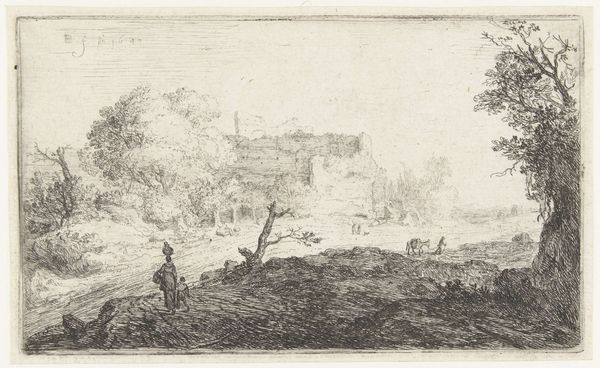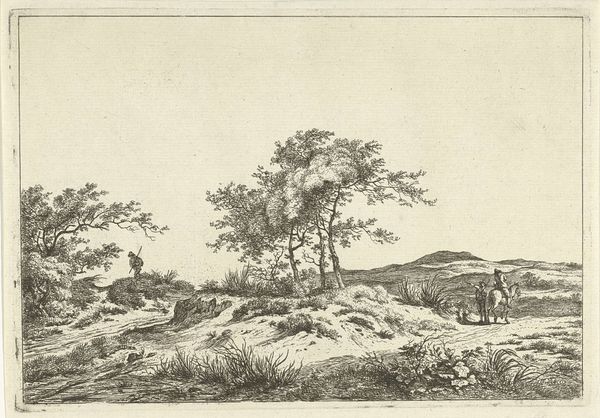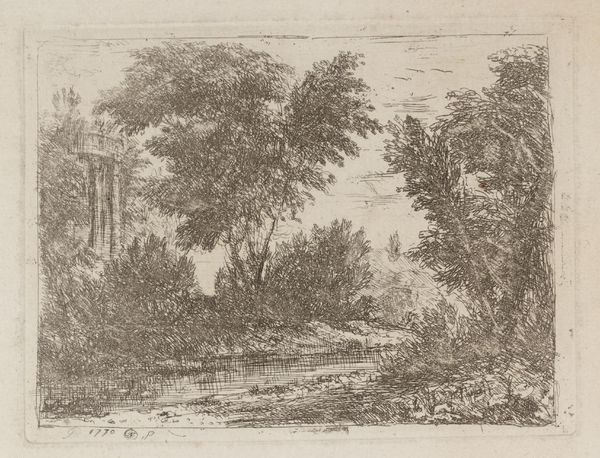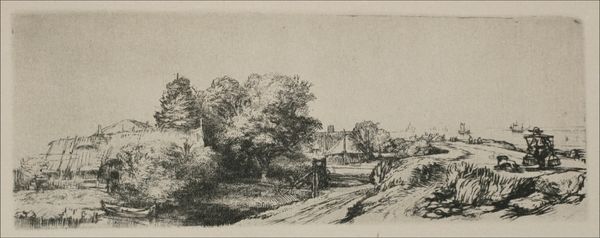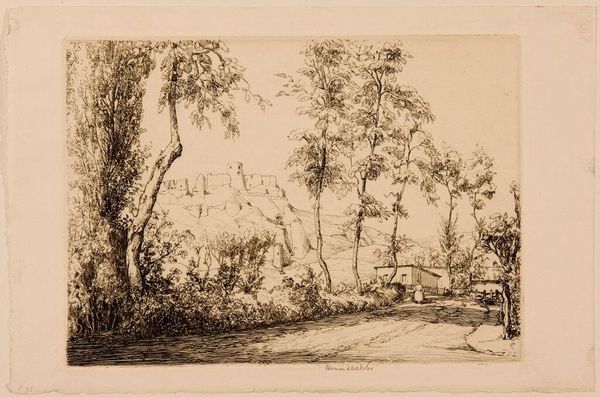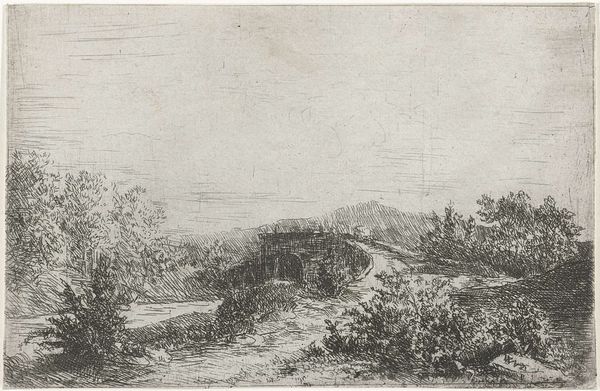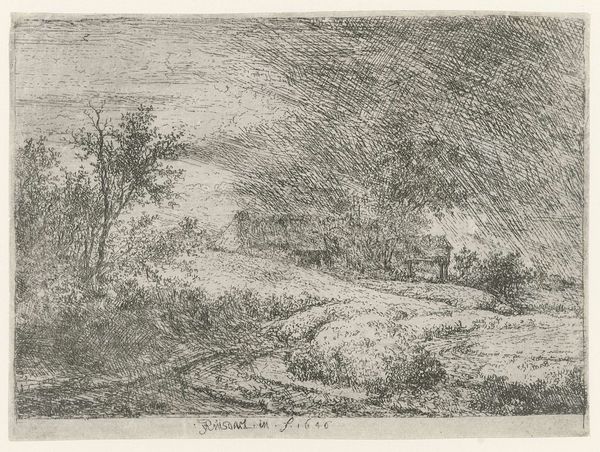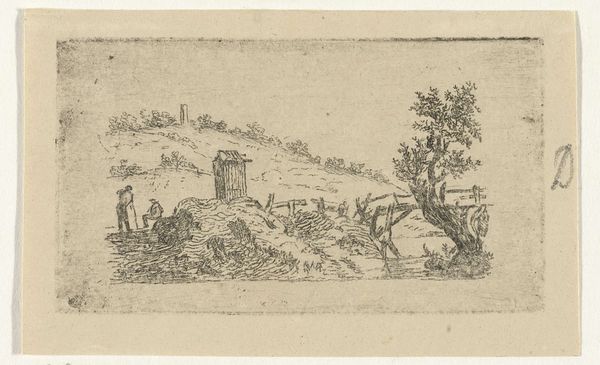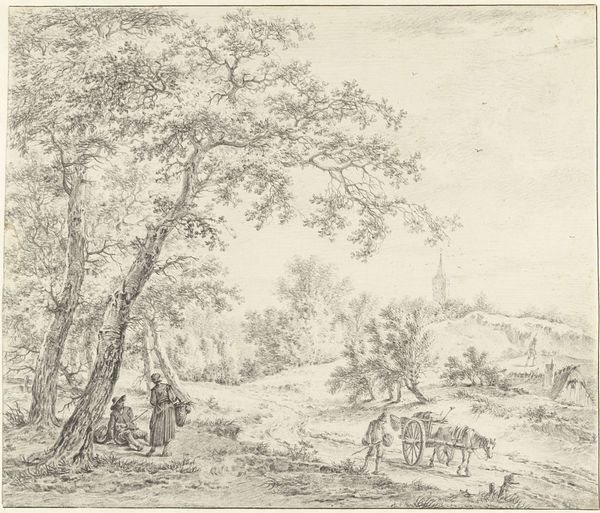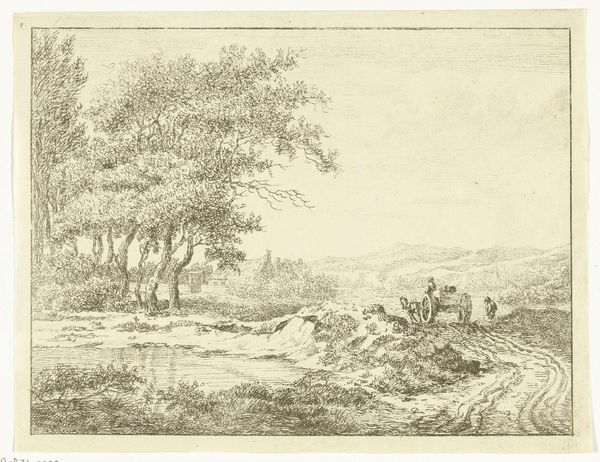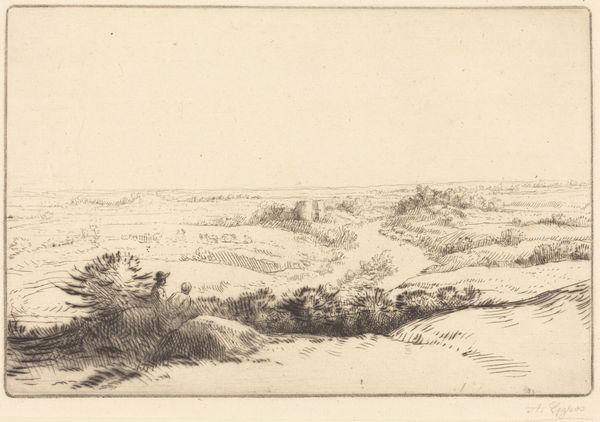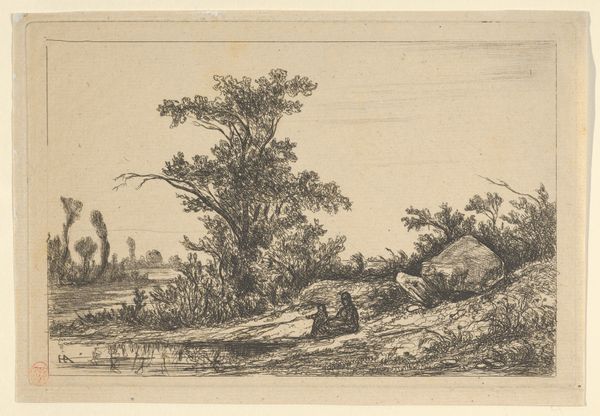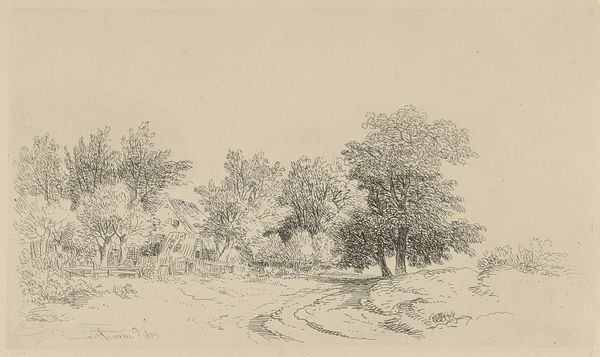
Copyright: National Gallery of Art: CC0 1.0
Curator: Looking at "The Hollow", an etching by Louis H.S. Calewaert from 1914, what’s your initial read? Editor: A quiet melancholy. The landscape, rendered in subtle shades of brown and gray, feels both familiar and somehow…abandoned. Curator: That sense of abandonment resonates, particularly if we situate this work within the context of pre-World War I Europe. The year it was made, 1914, stands on the precipice of unimaginable destruction. What appears as simple, bucolic imagery gains a haunting quality. Editor: Yes, the etching technique, the lines so finely drawn, captures that pre-war anxiety so well. Etchings like this were often accessible to a broader public, right? How does its distribution impact its role as a historical artifact? Curator: Absolutely. Prints democratized art, disseminating views and ideas much further than individual paintings. We see a nostalgic, potentially idealized, view of rural life here, which likely served to counter the realities of growing industrialization and social upheaval. Perhaps there’s a subtle critique of the changes already underway? Editor: Perhaps the “hollow” itself represents more than just a dip in the landscape. It's a metaphor for the societal emptiness brewing under the surface of that idealized past. But the lack of human presence – is that deliberate, or merely reflective of an aesthetic choice? Curator: It invites questions, doesn’t it? If Calewaert intentionally omitted figures, it amplifies the isolation, almost as if these houses stand empty, bereft of life or community. It's evocative of that looming emptiness about to arrive. Considering Calewaert's personal life, his social circle – can we unearth further context around what that imagery was representing at the time? Editor: Delving into those records would certainly enrich our interpretation. For me, thinking about audience reception in the early 20th century offers unique access to understand this work. Curator: Ultimately, "The Hollow" prompts us to look beyond its apparent tranquility and acknowledge the complexities of its historical moment and the tensions that define a whole era. Editor: It definitely highlights how a seemingly simple landscape can reveal deeper anxieties about the world.
Comments
No comments
Be the first to comment and join the conversation on the ultimate creative platform.
